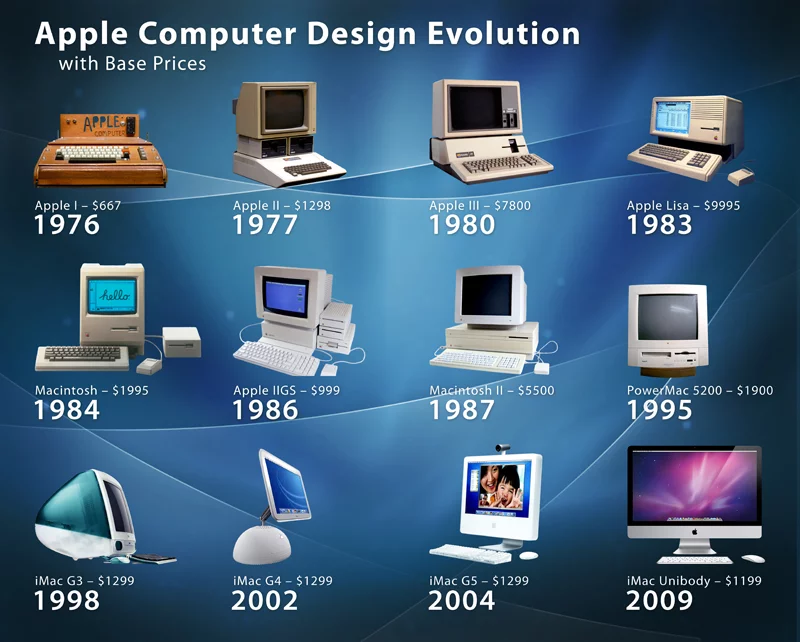The history of computers and the evolution of electronic blogs, or “e-blogs,” have both played significant roles in shaping the digital landscape. Here is a brief overview of their historical development:
Early Computers: The concept of computers dates back to the mid-20th century. The first electronic general-purpose computer, ENIAC, was developed in the 1940s. These early computers were massive machines that occupied entire rooms and were primarily used for complex calculations and data processing.
Internet and Personal Computers: In the 1970s and 1980s, personal computers (PCs) became more accessible and affordable, leading to a widespread adoption of computing technology. The development of the Internet in the 1990s further revolutionized communication and information sharing, laying the foundation for the emergence of electronic blogs.
Emergence of Blogs: The term “weblog” was coined by Jorn Barger in 1997, referring to a website where individuals shared regular updates and links to other online resources. In 1999, programmer Peter Merholz shortened the term to “blog,” which gained popularity and became widely used.
Blogging Platforms: The early 2000s witnessed the rise of dedicated blogging platforms, such as Blogger (1999) and WordPress (2003). These platforms simplified the process of creating and managing blogs, making it more accessible to a broader audience. Users could now write and publish their content without extensive technical knowledge.
Evolution of Blogging: As the blogging phenomenon grew, the medium diversified in terms of content and purpose. While early blogs mainly focused on personal diaries and commentary, they soon expanded to cover various topics like news, technology, lifestyle, and more. The blogosphere became a dynamic space that allowed individuals and organizations to share their thoughts, expertise, and experiences.
Social Media Impact: With the advent of social media platforms like Facebook, Twitter, and Instagram, the way people consumed and shared content underwent a significant shift. Microblogging platforms, such as Twitter, allowed users to share short updates in real-time, while Facebook and Instagram offered a more visual and interactive experience. These platforms influenced the way people communicated and impacted the popularity of traditional blogging.
Modern Blogging: Today, blogging continues to thrive, although the landscape has evolved. Many bloggers have integrated their content with social media platforms, utilizing a combination of blog posts, videos, podcasts, and other multimedia formats. Monetization options, such as advertising, sponsored content, and affiliate marketing, have also become prevalent for popular bloggers.
In conclusion, the history of computers and the advent of the Internet paved the way for the development of electronic blogs. From their humble beginnings as personal online diaries, blogs have evolved into diverse platforms for sharing information, opinions, and experiences, shaping the digital publishing landscape as we know it today.

Certainly! Here are some additional details on the historical development and key milestones in the evolution of electronic blogs:
Blogging Software and Platforms: As the popularity of blogs grew, dedicated software and platforms emerged to cater to the needs of bloggers. In addition to Blogger and WordPress, platforms like TypePad (2003) and Tumblr (2007) gained popularity. These platforms provided user-friendly interfaces and customizable templates, making it easier for individuals to create and manage their blogs.
Rise of Multimedia Content: With the advancement of technology and internet speeds, blogs began incorporating multimedia elements. Bloggers started embedding images, videos, and audio files to enhance their content and engage readers in a more interactive way. This shift allowed for more dynamic storytelling and diverse forms of expression.
Blogging Communities and Networks: Blogging communities and networks played a crucial role in connecting bloggers with similar interests and expanding their reach. Platforms like BlogCatalog (2004) and MyBlogLog (2005) allowed bloggers to discover and connect with each other, fostering collaborations and cross-promotion. These networks encouraged the growth of blogging as a community-driven activity.
Professional Blogging and Monetization: As the blogging landscape matured, some individuals turned their blogs into professional ventures. Bloggers started exploring monetization options, such as advertising, sponsored content, and affiliate marketing. This shift led to the emergence of professional bloggers who could generate income through their blogs, creating a new avenue for entrepreneurship and online business.
Corporate and Media Blogs: Alongside personal blogs, corporate and media organizations recognized the value of blogging as a communication and marketing tool. Many companies and media outlets started creating their blogs to engage with their audience, share updates, and establish thought leadership. Corporate blogging played a vital role in content marketing strategies, allowing brands to connect with their customers in a more authentic and informative manner.
Microblogging and Social Media Integration: Microblogging platforms like Twitter and social media platforms like Facebook and Instagram presented new challenges and opportunities for traditional blogging. While these platforms provided quick and immediate ways to share content and interact with an audience, they also influenced the attention span and content consumption habits of users. Many bloggers adapted by integrating their blogs with social media, using platforms like Facebook Pages and Twitter feeds to promote their blog posts and engage with readers.
Mobile Blogging: The advent of smartphones and mobile internet access further transformed the blogging landscape. Blogging platforms and software developed mobile apps, allowing bloggers to create and publish content on the go. Mobile-friendly blog designs became essential, considering the increasing number of readers accessing blogs through their mobile devices.
Niche and Influencer Blogging: With the saturation of the blogosphere, bloggers started focusing on niche topics to stand out and attract specific audiences. Niche blogging allowed individuals to establish themselves as experts in a particular field and build dedicated communities around their content. The rise of influencer marketing also led to the emergence of influential bloggers who leveraged their online presence to collaborate with brands and promote products or services.
Evolving Content Formats: In recent years, the blogging landscape has seen the emergence of new content formats. Video blogging (vlogging) on platforms like YouTube and TikTok has gained significant popularity, enabling bloggers to engage with their audience through visual storytelling. Podcasting has also become a prevalent form of content creation, with bloggers hosting their shows and sharing audio content on various platforms.
Content Management Systems (CMS): Modern content management systems have made it easier than ever to create and manage blogs. Platforms like WordPress have evolved into powerful CMSs, offering extensive customization options, plugins, and themes. These CMSs provide flexibility and scalability, catering to the needs of both individual bloggers and professional publishers.
The evolution of electronic blogs has been influenced by technological advancements, changing user preferences, and the evolving digital landscape. Today, blogging remains a vibrant medium for individuals, businesses, and media organizations to share their ideas, expertise, and stories with a global audience.























